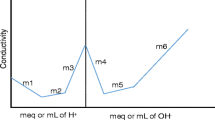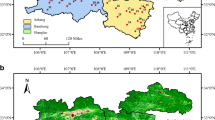Abstract
The optical properties of dissolved organic matter (DOM) are of interest as they are used to monitor or optimize drinking and wastewater treatment and influence the fate of contaminants in surface waters. DOM optical properties are presented as resulting either from charge-transfer (CT) interactions or from a superposition model. Herein, we present investigations of the effects of reduction (sodium borohydride) and oxidation (ozone) on the absorbance and fluorescence of three humic substance isolates of different origins (soil, autochthonous and allochthonous aquatic isolates). Both ozone and borohydride treatments induce a strong decrease in light absorption properties of the three isolates. For fluorescence, the treatments induce a fluorescence increase for the soil isolate while for the aquatic isolates, they induce either an increase or decrease. The effect of reductive or oxidative treatments is discussed using both the CT and the superposition model. The variations in the isolate’s composition (phenolic, quinones, aromatics moieties) are used to discuss the observed differences in treatments effects between the three isolates. Overall, this study provides insight into the contributions of different compound classes to DOM optical properties as explained by the CT and superposition models.





Similar content being viewed by others
Data availability
Data archiving is not mandated but data will be made available on reasonable request.
References
Aeschbacher M, Graf C, Schwarzenbach RP, Sander M (2012) Antioxidant properties of humic substances. Environ Sci Technol 46(9):4916–4925
Aeschbacher M, Sander M, Schwarzenbach RP (2010) Novel electrochemical approach to assess the redox properties of humic substances. Environ Sci Technol 44(1):87–93
Aiken GR, Malcolm RL (1987) Molecular weight of aquatic fulvic acids by vapor pressure osmometry. Geochim Cosmochim Acta 51:2177–2184
Ariese F, van Assema S, Gooijer C, Bruccoleri AG, Langford CH (2004) Comparison of Laurentian fulvic acid luminescence with that of the hydroquinone/quinone model system: evidence from low temperature fluorescence studies and EPR spectroscopy. Aquat Sci 66(1):86–94
Berg SM, Whiting QT, Herrli JA, Winkels R, Wammer KH, Remucal CK (2019) The role of dissolved organic matter composition in determining photochemical reactivity at the molecular level. Environ Sci Technol 53(20):11725–11734
Boyle ES, Guerriero N, Thiallet A, Vecchio RD, Blough NV (2009) Optical properties of humic substances and CDOM: relation to structure. Environ Sci Technol 43(7):2262–2268
Chen Y, Liu J, Zhang X, Blough NV (2020) Time-resolved fluorescence spectra of untreated and sodium borohydride-reduced chromophoric dissolved organic matter. Environ Sci Technol 54(19):12109–12118
Clark CD, Jimenez-Morais J, Jones G, Zanardi-Lamardo E, Moore CA, Zika RG (2002) A time-resolved fluorescence study of dissolved organic matter in a riverine to marine transition zone. Mar Chem 78(2–3):121–135
De Castro KA, Ko J, Park D, Park S, Rhee H (2007) Reduction of ethyl benzoylacetate and selective protection of 2-(3-Hydroxy-1-phenylpropyl)-4-methylphenol: a new and facile synthesis of tolterodine. Org Process Res Dev 11(5):918–921
Del Vecchio R, Blough NV (2004) On the origin of the optical properties of humic substances. Environ Sci Technol 38(14):3885–3891
Golanoski KS, Fang S, Del Vecchio R, Blough NV (2012) Investigating the mechanism of phenol photooxidation by humic substances. Environ Sci Technol 46(7):3912–3920
Hawkes JA, Sjöberg PJR, Bergquist J, Tranvik LJ (2019) Complexity of dissolved organic matter in the molecular size dimension: insights from coupled size exclusion chromatography electrospray ionisation mass spectrometry. Faraday Discuss 218:52–71
Helms JR, Stubbins A, Ritchie JD, Minor EC, Kieber DJ, Mopper K (2008) Absorption spectral slopes and slope ratios as indicators of molecular weight, source, and photobleaching of chromophoric dissolved organic matter. Limnol Oceanogr 53(3):955–969
Johnson MR, Rickborn B (1970) Sodium borohydride reduction of conjugated aldehydes and ketones. J Org Chem 35(4):1041–2000
Kleber M, Lehmann J (2019) Humic substances extracted by alkali are invalid proxies for the dynamics and functions of organic matter in terrestrial and aquatic ecosystems. J Environ Qual 48(2):207–210
Korak JA, Dotson AD, Summers RS, Rosario-Ortiz FL (2014) Critical analysis of commonly used fluorescence metrics to characterize dissolved organic matter. Water Res 49:327–338
Kothawala DN, Murphy KR, Stedmon CA, Weyhenmeyer GA, Tranvik LJ (2013) Inner filter correction of dissolved organic matter fluorescence. Limnol Oceanogr Methods 11(12):616–630
Lehmann J, Kleber M (2015) The contentious nature of soil organic matter. Nature 113(7580):143–149
Leresche F, McKay G, Kurtz T, von Gunten U, Canonica S, Rosario-Ortiz FL (2019) Effects of ozone on the photochemical and photophysical properties of dissolved organic matter. Environ Sci Technol 53(10):5622–5632
Leresche F, Torres-Ruiz JA, Kurtz T, von Gunten U, Rosario-Ortiz FL (2021) Optical properties and photochemical production of hydroxyl radical and singlet oxygen after ozonation of dissolved organic matter. Environ Sci Water Res Technol 7(2):346–356
Leresche F, Vialykh EA, Rosario-Ortiz FL (2022) Computational calculation of dissolved organic matter absorption spectra. Environ Sci Technol 56(1):491–500
Li H, McKay G (2021) Relationships between the physicochemical properties of dissolved organic matter and its reaction with sodium borohydride. Environ Sci Technol 55(15):10843–10851
Ma J, Del Vecchio R, Golanoski KS, Boyle ES, Blough NV (2010) Optical properties of humic substances and CDOM: effects of borohydride reduction. Environ Sci Technol 44(14):5395–5402
Maizel AC, Li J, Remucal CK (2017) Relationships between dissolved organic matter composition and photochemistry in lakes of diverse trophic status. Environ Sci Technol 51(17):9624–9632
Maizel AC, Remucal CK (2017) Molecular composition and photochemical reactivity of size-fractionated dissolved organic matter. Environ Sci Technol 51(4):2113–2123
Maurer F, Christl I, Kretzschmar R (2010) Reduction and reoxidation of humic acid: influence on spectroscopic properties and proton binding. Environ Sci Technol 44(15):5787–5792
McKay G (2020) Emerging investigator series: critical review of photophysical models for the optical and photochemical properties of dissolved organic matter. Environ Sci Process Impacts 22:1139–1165
McKay G (2021) Autoxidized hydroquinone mimics the optical properties of chromophoric dissolved organic matter. Environ Sci Technol Lett 8(9):825–831
McKay G, Couch KD, Mezyk SP, Rosario-Ortiz FL (2016) Investigation of the coupled effects of molecular weight and charge-transfer interactions on the optical and photochemical properties of dissolved organic matter. Environ Sci Technol 50(15):8093–8102
McKay G, Korak JA, Erickson PR, Latch DE, McNeill K, Rosario-Ortiz FL (2018) The case against charge transfer interactions in dissolved organic matter photophysics. Environ Sci Technol 52(2):406–414
McKnight DM, Boyer EW, Westerhoff PK, Doran PT, Kulbe T, Andersen DT (2001) Spectrofluorometric characterization of dissolved organic matter for indication of precursor organic material and aromaticity. Limnol Oceanogr 46(1):38–48
Murphy KR, Timko SA, Gonsior M, Powers LC, Wünsch UJ, Stedmon CA (2018) Photochemistry illuminates ubiquitous organic matter fluorescence spectra. Environ Sci Technol 52(19):11243–11250
Mvula E, von Sonntag C (2003) Ozonolysis of phenols in aqueous solution. Org Biomol Chem 1(10):1749–1756
Olk DC, Bloom PR, Perdue EM, McKnight DM, Chen Y, Farenhorst A, Senesi N, Chin YP, Schmitt-Kopplin P, Hertkorn N, Harir M (2019) Environmental and agricultural relevance of humic fractions extracted by alkali from soils and natural waters. J Environ Qual 48(2):217–232
Önnby L, Salhi E, McKay G, Rosario-Ortiz FL, von Gunten U (2018) Ozone and chlorine reactions with dissolved organic matter–assessment of oxidant-reactive moieties by optical measurements and the electron donating capacities. Water Res 144:64–75
Peuravuori J, Pihlaja K (1997) Molecular size distribution and spectroscopic properties of aquatic humic substances. Anal Chim Acta 337:133–149
Phillips SM, Smith GD (2014) Light absorption by charge transfer complexes in brown carbon aerosols. Environ Sci Technol Lett 1(10):382–386
Pitchumani K, Velusamy P, Srinivasan C (1994) Selectivity in sodium borohydride reduction of coumarin encapsulated in β-cyclodextrin. Tetrahedron 50(45):12979–12988
Ratasuk N, Nanny MA (2007) Characterization and quantification of reversible redox sites in humic substances. Environ Sci Technol 41(22):7844–7850
Rodríguez JL, Poznyak T, Chairez I (2018) Ozonation of polynuclear aromatic hydrocarbons in combination with activated carbon in the presence of methanol. Chem Eng Commun 205(12):1678–1690
Schendorf TM, Del Vecchio R, Koech K, Blough NV (2016) A standard protocol for NaBH4 reduction of CDOM and HS. Limnol Oceanogr Methods 14(6):414–423
Sharpless CM (2012) Lifetimes of triplet dissolved natural organic matter (DOM) and the effect of NaBH4 reduction on singlet oxygen quantum yields: implications for DOM photophysics. Environ Sci Technol 46(8):4466–4473
Sharpless CM, Blough NV (2014) The importance of charge-transfer interactions in determining chromophoric dissolved organic matter (CDOM) optical and photochemical properties. Environ Sci Process Impacts 16(4):654–671
Stubbins A, Lapierre JF, Berggren M, Prairie YT, Dittmar T, del Giorgio PA (2014) What’s in an EEM? Molecular signatures associated with dissolved organic fluorescence in Boreal Canada. Environ Sci Technol 48(18):10598–10606
Tentscher PR, Bourgin M, von Gunten U (2018) Ozonation of para-substituted phenolic compounds yields p-benzoquinones, other cyclic α, β-unsaturated ketones, and substituted catechols. Environ Sci Technol. https://doi.org/10.1021/acs.est.8b00011
Tentscher PR, Escher BI, Schlichting R, König M, Bramaz N, Schirmer K, von Gunten U (2021) Toxic effects of substituted p-benzoquinones and hydroquinones in in vitro bioassays are altered by reactions with the cell assay medium. Water Res 202:117415
Thorn KA, Cox LG (2009) N-15 NMR spectra of naturally abundant nitrogen in soil and aquatic natural organic matter samples of the international humic substances society. Org Geochem 40(4):484–499
Trofimova A, Hems RF, Liu T, Abbatt JPD, Schnitzler EG (2019) Contribution of charge-transfer complexes to absorptivity of primary brown carbon aerosol. ACS Earth Sp Chem 3(8):1393–1401
Vialykh EA, McKay G, Rosario-Ortiz FL (2020) Computational assessment of the three-dimensional configuration of dissolved organic matter chromophores and influence on absorption spectra. Environ Sci Technol. https://doi.org/10.1021/acs.est.0c05860
von Sonntag C, von Gunten U (2012) Chemistry of ozone in water and wastewater treatment: from basic principles to applications. IWA Publishing, London, UK, pp 1–303
Wagner S, Jaffé R, Cawley K, Dittmar T, Stubbins A (2015) Associations between the molecular and optical properties of dissolved organic matter in the Florida Everglades, a model coastal wetland system. Front Chem 3:66
Walpen N, Getzinger GJ, Schroth MH, Sander M (2018) Electron-donating phenolic and electron-accepting quinone moieties in peat dissolved organic matter: quantities and redox transformations in the context of peat biogeochemistry. Environ Sci Technol 52(9):5236–5245
Wenk J, Aeschbacher M, Salhi E, Canonica S, von Gunten U, Sander M (2013) Chemical oxidation of dissolved organic matter by chlorine dioxide, chlorine, and ozone: effects on its optical and antioxidant properties. Environ Sci Technol 47(19):11147–11156
Wünsch UJ, Acar E, Koch BP, Murphy KR, Schmitt-Kopplin P, Stedmon CA (2018) The molecular fingerprint of fluorescent natural organic matter offers insight into biogeochemical sources and diagenetic state. Anal Chem 90(24):14188–14197
Wünsch UJ, Murphy KR, Stedmon CA (2017a) The one-sample PARAFAC approach reveals molecular size distributions of fluorescent components in dissolved organic matter. Environ Sci Technol 51(20):11900–11908
Wünsch UJ, Stedmon CA, Tranvik LJ, Guillemette F (2017b) Unraveling the size-dependent optical properties of dissolved organic matter. Limnol Oceanogr 1217:4414–4422
Yakimov BP, Rubekina AA, Budylin GS, Zherebker AY, Kompanets VO, Chekalin SV, Vainer YG, Fadeev VV, Gorbunov MY, Perminova IV, Shirshin EA (2021) Ultrafast energy transfer determines the formation of fluorescence in DOM and humic substances. Environ Sci Technol 55(15):10365–10377
Yang P, Jiang T, Cong Z, Liu G, Guo Y, Liu Y, Shi J, Hu L, Yin Y, Cai Y, Jiang G (2022) Loss and increase of the electron exchange capacity of natural organic matter during its reduction and reoxidation: the role of quinone and nonquinone moieties. Environ Sci Technol 56(10):6744–6753
Zherebker A, Shirshin E, Rubekina A, Kharybin O, Kononikhin A, Kulikova NA, Zaitsev KV, Roznyatovsky VA, Grishin YK, Perminova IV, Nikolaev EN (2020) Optical properties of soil dissolved organic matter are related to acidic functions of its components as revealed by fractionation, selective deuteromethylation, and ultrahigh resolution mass spectrometry. Environ Sci Technol 54(5):2667–2677
Acknowledgements
The authors are grateful to the International Humic Substances Society for the continued provision of well-characterized isolates for the continued study of dissolved organic matter and humic substance optical properties.
Author information
Authors and Affiliations
Corresponding author
Ethics declarations
Conflict of interest
Authors declare no conflict of interest.
Additional information
Publisher's Note
Springer Nature remains neutral with regard to jurisdictional claims in published maps and institutional affiliations.
Rights and permissions
Springer Nature or its licensor holds exclusive rights to this article under a publishing agreement with the author(s) or other rightsholder(s); author self-archiving of the accepted manuscript version of this article is solely governed by the terms of such publishing agreement and applicable law.
About this article
Cite this article
McKay, G., Leresche, F. Impacts of ozone oxidation and borohydride reduction on the optical properties of humic substance isolates. Aquat Sci 84, 65 (2022). https://doi.org/10.1007/s00027-022-00892-1
Received:
Accepted:
Published:
DOI: https://doi.org/10.1007/s00027-022-00892-1




